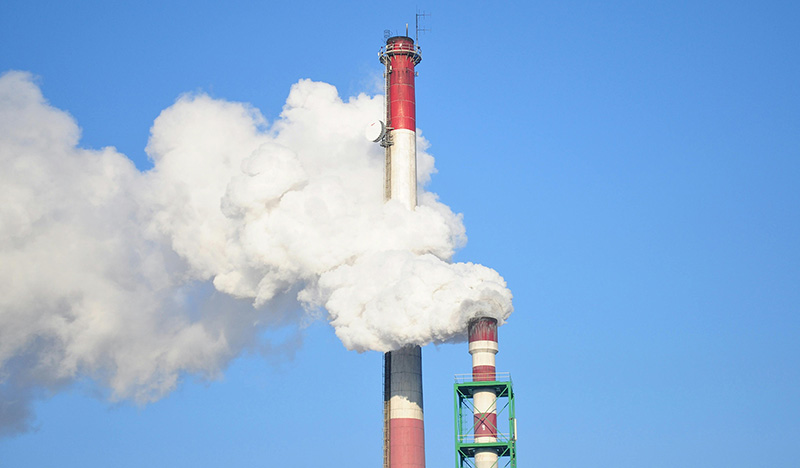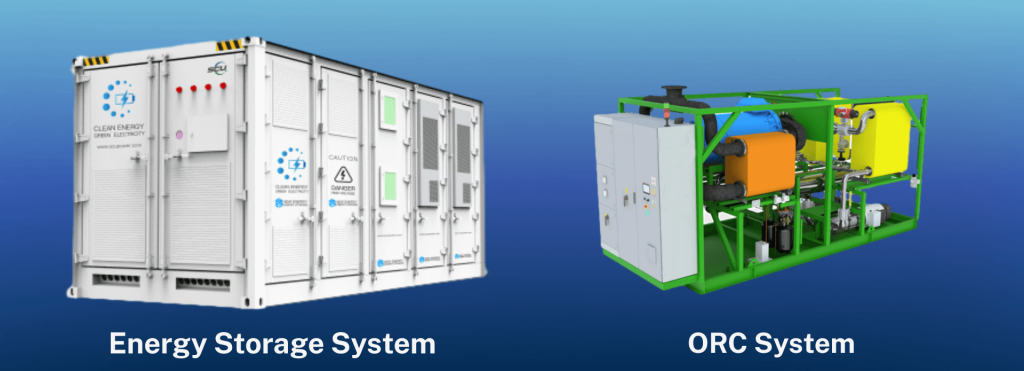With the continuous advancement of energy structure transformation and green and low-carbon goals, more and more thermal power plants have begun to deploy ORC (Organic Rankine Cycle) systems to efficiently recover industrial waste heat or geothermal resources for clean power generation.
However, the single ORC system has gradually exposed its limitations in power response, economic dispatch and grid-connected flexibility. Deep integration of the ORC system and battery energy storage system has become an important path for the transformation and upgrading of thermal power plants.
SCU recently successfully provided a 1MWh boxed energy storage system for a European thermal power plant, and integrated it with the ORC system to create a highly responsive, low-carbon and efficient power support platform for the plant.

Background: Thermal power plants introduce energy storage systems to cope with grid connection and frequency regulation challenges
SCU’s customers are located in an industrial park. In the early days, an ORC system was built to recover low-grade thermal energy and provide basic power support for the park and the power grid. However, although the ORC system has the advantage of stable power generation, it is difficult to assume key roles such as frequency regulation and peak shaving, and it also misses the opportunity to earn revenue during high electricity price periods.
To this end, the customer decided to introduce a battery energy storage system to operate in conjunction with the existing ORC power generation system to improve the power plant’s rapid response capability on the grid side, achieve flexible power management and higher economic benefits.
Solution: ORC + energy storage system to create an efficient, flexible and green smart power plant
SCU provides a 20ft containerized energy storage container for the project, with a battery capacity of 1MWh and a PCS capacity of 400kW. Together with the customer’s existing ORC system, it forms an “ORC + energy storage” system.

Highlights:
- Flexible regulation, millisecond response: The ORC system has stable power generation but slow response. The energy storage system has millisecond dynamic response capabilities, which can effectively undertake tasks such as grid frequency regulation and peak regulation, improve grid adaptability, and ensure grid frequency stability.
- Energy dispatch is more economical: The energy storage system can store electricity when the ORC system is generating electricity, and choose to discharge it during the peak period of electricity prices, so as to achieve “peak shaving” of electricity and maximize economic benefits.
- Enhanced power stability: When the output of ORC is unstable due to fluctuations in the heat source, the energy storage system acts as a “buffer” to smooth out the output fluctuations, ensure the quality of power supply and the safe operation of downstream equipment.
- Microgrid support and island operation capabilities: In remote or unstable power grid areas, the energy storage system enables ORC to build a stable microgrid, achieve autonomous power supply, and enhance system robustness and flexibility.
- Dual-channel revenue path: In addition to earning revenue through electricity sales, the project can also participate in grid auxiliary services (such as frequency regulation), expand profit models, and improve investment returns.
- Assisting green and low-carbon transformation: The entire system has zero carbon emissions, significantly reduces dependence on fossil energy, is in line with sustainable development strategies and policy orientations, and is expected to obtain carbon credits and policy incentives.
The energy storage system not only makes up for the weakness of ORC’s slow response, but also participates in frequency regulation and peak-to-valley filling, releasing electricity during peak electricity price periods to obtain higher revenues, thereby improving overall operating efficiency and economy. The integration of ORC+energy storage system is becoming an important solution for the intelligent and green upgrade of thermal power plants.
SCU: The core force of building a flexible energy storage system
SCU energy storage system has been widely used in multiple scenarios such as new energy power generation, power grid, industry and commerce with its highly modular structural design, stable and reliable battery cell technology and intelligent EMS system. This project once again demonstrated SCU’s innovative ability in the “energy storage + energy recovery” integration solution.
In the future, SCU will continue to promote the integration of advanced energy storage technology with various energy scenarios, and work with more industry partners to inject higher intelligence and resilience into the global energy system. If you need more thermal power/ORC+energy storage integration solutions, don’t hesitate to get in touch with the SCU team: enquiry@scupower.com.
